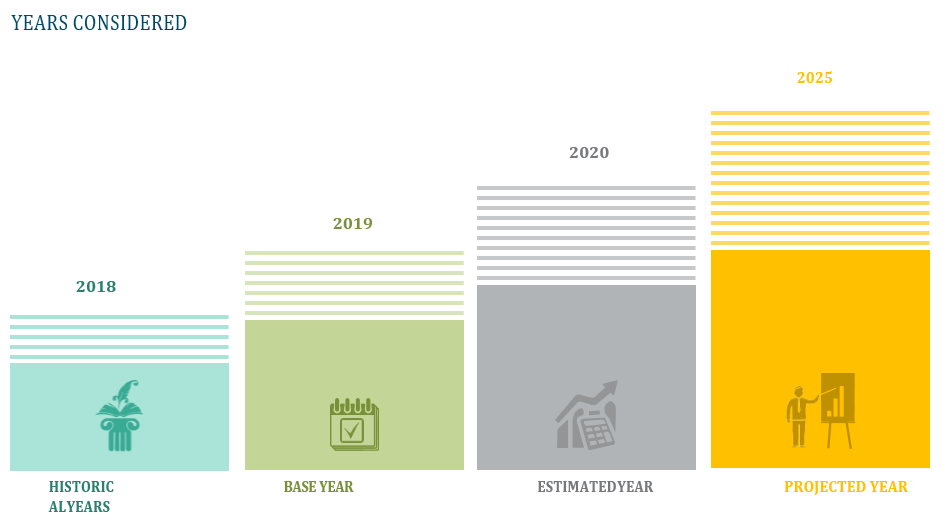OVERVIEW
The market for wearable fitness technology is expected to hit USD 17.6 billion by 2025, rising from 2020 to 2025 at a CAGR of 12.3 per cent. In the coming years, the market is expected to see rapid growth led by customer demand for advanced technology, increased adoption of wearable fitness and medical devices, increased Internet of Things usage, increased knowledge of health and increased disposable incomes in emerging economies.








TABLE OF CONTENT
1 Global Wearable Fitness Technology Market – Overview
1.1 Study Objectives
1.2 Market Definition
1.3 Study Scope
1.3.1 Markets Covered
1.3.2 Geographic Scope
2 RESEARCH METHODOLOGY
2.1 Research Data
2.1.1 Secondary Data
2.1.1.1 Key Data From Secondary Sources
2.1.2 Primary Data
2.1.2.1 Key Data From Primary Sources
2.1.2.2 Key Industry Insights
2.1.2.3 Breakdown of Primaries
2.2 Market Size Estimation
2.2.1 Bottom-Up Approach
2.2.2 Top-Down Approach
2.3 Market Breakdown and Data Triangulation
2.4 Research Assumptions
3 Global Wearable Fitness Technology Market – Executive Summary
3.1 Market Revenue, Market Size and Key Trends by Company
3.2 Key Trends by type of Application
3.3 Key Trends segmented by Geography
4 Global Wearable Fitness Technology Market – Comparative Analysis
4.1 Product Benchmarking – Top 10 companies
4.2 Top 5 Financials Analysis
4.3 Market Value split by Top 10 companies
4.4 Patent Analysis – Top 10 companies
4.5 Pricing Analysis
5 Global Wearable Fitness Technology Market – Industry Market Entry Scenario
5.1 Regulatory Framework Overview
5.2 New Business and Ease of Doing business index
5.3 Case studies of successful ventures
5.4 Customer Analysis – Top 10 companies
6 Global Wearable Fitness Technology Market – Market Forces
6.1 Introduction
6.2 Market Dynamics
6.2.1 Drivers
6.2.2 Opportunities
6.2.3 Challenges
6.3 Porters Analysis of Market
6.3.1 Bargaining power of suppliers
6.3.2 Bargaining powers of customers
6.3.3 Threat of new entrants
6.3.4 Rivalry among existing players
6.3.5 Threat of substitutes
7 Global Wearable Fitness Technology Market – Strategic Analysis
7.1 Value Chain analysis
7.2 Product Life Cycle
7.3 Supplier and distributor analysis (Market share and product dealing strategies)
8 Global Wearable Fitness Technology Market – By Component (Market Size – & million/billion)
8.1 Displays
8.2 Processors
8.3 Memory Chips
8.4 Power Management Components
8.5 Networking Components
8.6 User Interface Components
8.7 Sensors
8.8 Mechanical Components
8.9 Others
9 Global Wearable Fitness Technology Market – By Product
9.1 Smartwatch
9.2 Wristband
9.3 Smartshoe
9.4 Smart Shirt/Jacket
9.5 Headband/Smartcap
9.6 Others
10 Global Wearable Fitness Technology Market – By Product Category
10.1 Handwear
10.2 Torsowear
10.3 Legwear
10.4 Headwear
10.5 Others
11 Global Wearable Fitness Technology Market – By Technology
11.1 Computing Technologies (Wearable Computers)
11.2 Sensor Technologies (Accelerometers and MEMS)
11.3 Speech Recognition Technologies
11.4 Display Technlogies (HUD, HMD, Amoled, and Augmented Reality)
11.5 Networking Technologies (Bluetooth, NFC, AND+, and Wi-Fi)
11.6 Positioning Technologies (GPS and Digital Compass)
12 Global Wearable Fitness Technology Market – By Geography (Market Size – &
million/billion)
12.1 Introduction
12.2 North America
12.2.1 US
12.2.2 Canada
12.2.3 Mexico
12.3 Europe
12.3.1 U.K
12.3.2 Germany
12.3.3 Italy
12.3.4 France
12.3.5 Spain
12.3.6 Rest of Europe
12.4 Asia-Pacific
12.4.1 China
12.4.2 Japan
12.4.3 India
12.4.4 South Korea
12.4.5 Rest of APAC
12.5 Rest of the World
12.5.1 South America
12.5.2 Middle East
12.5.3 Africa
13 Global Wearable Fitness Technology Market – Entropy
13.1 New product launches
13.2 M&A’s, collaborations, JVs and partnerships
14 Global Wearable Fitness Technology Market Company Profile (Key Players)
14.1 Market Share, Company Revenue, Products, M&A, Developments
14.2 Fitbit Inc.
14.3 Apple Inc.
14.4 Xiaomi Technology Co. Ltd.
14.5 Samsung Electronics Co. Ltd.
14.6 Sony Corp.
14.7 Jawbone Inc.
14.8 Adidas AG
14.9 LG Electronics Inc.
14.10 Nike Inc.
14.11 Qualcomm Inc.
14.12 Company 11 & more
15 Global Wearable Fitness Technology Market – Appendix
15.1 Sources
15.2 Abbreviations










